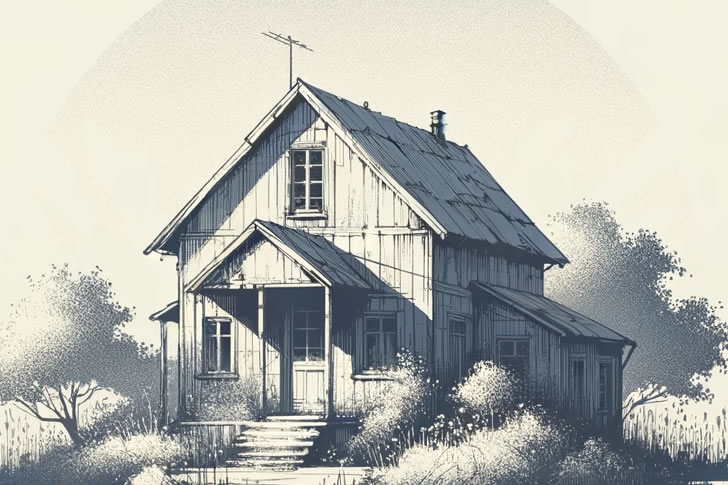Cheap Housing For Seniors: Abandoned Properties
Finding affordable living arrangements is a priority for many seniors, especially when retirement funds are limited. An intriguing option that has been gaining traction among seniors is purchasing or acquiring cheap abandoned houses to transform into comfortable, livable homes. We’ve carried out detailed research, you might just find your dream property waiting for you.

Understanding Abandoned Houses
An abandoned house is typically a property that has been vacated for various reasons – financial distress, owner’s death, or other personal reasons leading to its neglect. These homes often fall into disrepair, making them less desirable for the average buyer but potential gems for those willing to put in the effort to rehabilitate them.
Why Consider Abandoned Houses?
For seniors, the primary appeal of abandoned houses is affordability. According to a 2020 report by the National Institute on Retirement Security, over 40% of single retirees struggle to meet basic expenses. An abandoned property, usually priced significantly, can alleviate financial strain, offering not just a residence but a potential investment.
Finding Abandoned Properties
1. Local Government Auctions: Cities and towns often auction off properties for back taxes. These auctions can be a goldmine for affordable properties.
2. Banks and Financial Institutions: Contact banks to inquire about foreclosed, REO (real estate owned), or bank-owned properties which they are keen to sell to recoup lost money.
3. Real Estate Agents Specializing in Distressed Properties: Some realtors specialize in distressed properties and can be invaluable in your search.
4. Online Databases and Websites: Websites like PropertyShark or RealtyTrac can provide lists of foreclosed and abandoned homes in your desired area.
Assessing the Condition and Costs
Before making a purchase, enlisting a skilled inspector is crucial to evaluate the property’s condition. This step is essential to avoid sinking money into a money pit. The costs of renovations can vary widely, but according to HomeAdvisor, the average homeowner spends about $46,000 on renovations. For abandoned homes, this cost can be higher due to potential structural, plumbing, or electrical issues.
Financing the Purchase
Securing financing for an abandoned property can be challenging but not impossible. Here are some options:
1. Traditional Mortgages: Some banks might be hesitant, yet others specialize in loans for fixer-uppers, like the FHA 203(k) rehabilitation mortgage insurance program, which includes funds for renovation.
2. Personal or Home Equity Loans: If the mortgage route is prohibitive, a personal or home equity loan can provide the necessary funds.
3. Government Grants and Programs: Programs like the very low-income housing repair program offer grants and loans to seniors who wish to repair, improve, or modernize their homes.
Legal Considerations and Potential Complications
It’s imperative to understand local zoning laws and property standards. Occasionally, abandoned homes can have legal entanglements like liens or unresolved ownership issues that need careful navigation. Legal counsel during the buying process can help mitigate these risks.
Community Impact and Personal Satisfaction
Revitalizing an abandoned property can have a positive impact on the community by improving property values and enhancing neighborhood aesthetics. Additionally, the personal satisfaction of restoring a house and making it a home can be profoundly fulfilling, creating a sense of accomplishment and a personal touch to one’s living environment.
Conclusion
For seniors looking at affordable housing options, abandoned houses present a viable solution. Though not without challenges, the financial and personal rewards can be substantial. With due diligence, careful planning, and a bit of creativity, these properties can transform into cozy, customized homes.







Recent Comments